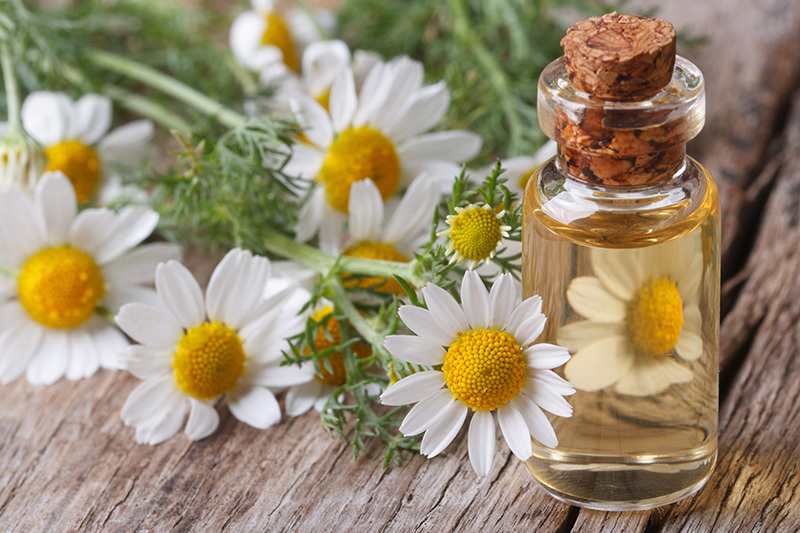Unveiling Tricks to Enhance Poinsettia Longevity
Posted on 26/08/2025
Unveiling Tricks to Enhance Poinsettia Longevity
Poinsettias, Euphorbia pulcherrima, are cherished worldwide for their vibrant color and association with festive cheer. But while these iconic plants often brighten homes during the holiday season, many enthusiasts struggle to keep them thriving long after. This comprehensive guide explores actionable secrets and expert techniques to enhance poinsettia longevity, ensuring your poinsettias remain stunning for months--or even years--to come.

Understanding Poinsettia Needs: The Foundation For Longevity
Before diving into advanced care tricks, it's vital to grasp the natural preferences of this tropical beauty. Native to Mexico, the poinsettia thrives in warm, semi-arid climates, which fundamentally influences its care requirements. By mimicking these natural conditions indoors, you lay the groundwork for a plant that grows healthily, resists decline, and rewards you with continuous color.
Key Factors Affecting Poinsettia Lifespan
- Light: Prefers bright, indirect sunlight
- Temperature: Thrives between 60°F and 75°F (15°C to 24°C)
- Water: Likes evenly moist, but not soggy, soil
- Humidity: Prefers moderate to high humidity
- Airflow: Needs good air circulation, without cold drafts
Understanding--and respecting--these basic needs provides the essential context for maximizing the longevity of poinsettias in your home.
Tricks to Prolong the Vibrancy of Poinsettia Plants
1. Purchase Quality Plants
The journey to long-lasting poinsettias starts at the store. Choose plants that are bushy and well-branched, with dark green foliage. Avoid specimens with wilting, yellow leaves, or signs of disease.
- Check for maturity: Look for yellowish-green buds in the center; open, fluffy clusters signal a plant past peak.
- Transport carefully: Protect from cold wind and swift temperature changes, as poinsettias are highly sensitive to chilly drafts.
Pro Tip: Wrap your poinsettia in a paper sleeve when transporting it home to shield it from outdoor temperature shocks.
2. Optimal Placement: Light and Temperature
Proper positioning is critical for enhancing poinsettia longevity:
- Sunlight: Place your poinsettia near a sunny window where it can receive at least 6 hours of indirect light daily.
- Temperature: Keep away from cold glass, open windows, heaters, or fireplaces that cause temperature fluctuations.
- Drafts: Avoid places where the plant is exposed to sudden drafts or hot, dry air from heating vents.
Consistent, warm, and draft-free environments are key to extending the lifespan of poinsettias.
3. Watering Wisely for Extended Life
A common pitfall is improper watering--either too much or too little can rapidly shorten the life of your poinsettia. Here's how to perfect this balance:
- Check soil moisture: Before watering, stick your finger about an inch into the soil; only water if it feels dry.
- Watering technique: Remove decorative foil, water thoroughly, and let excess drain away. Never let the pot sit in standing water as this promotes root rot.
- Humidity: Dry indoor air can harm poinsettias. Increase humidity with a pebble tray or gentle misting, especially in winter.
Prolonged moisture consistency equals poinsettia longevity.
4. Proper Fertilization for Year-Round Health
If you want your poinsettia to flourish beyond the holidays, a strategic feeding routine is crucial:
- When to fertilize: Begin fertilizing after the active blooming season--you can start once new growth appears (typically late winter to early spring).
- Type of fertilizer: Use a balanced, water-soluble fertilizer (such as 10-10-10 or 20-20-20) every 3-4 weeks during the growing season.
- Avoid fertilizing while the plant is in bloom.
Correct fertilization supports strong roots and vibrant bracts, supporting poinsettia longevity for multiple seasons.
5. Repotting: Make Space for Growth
If you're aiming to prolong the life span of your poinsettia through multiple years, consider repotting:
- Timing: Repot in late spring or early summer when the plant enters active growth.
- Method: Gently shift your poinsettia into a slightly bigger pot with fresh potting mix.
- Aim: This rejuvenates roots and ensures adequate nutrients, contributing to long-term vitality.
Fresh soil and space are secrets to extending poinsettia life beyond a single holiday season.
6. Annual Pruning and Rejuvenation
Don't be afraid to prune! Trimming encourages bushier, healthier plants with more bracts next season.
- Trim back stems to 4-6 inches above soil after the color fades (typically in late winter or early spring).
- Remove weak or crowded growth to stimulate larger, more robust new branches.
Annual pruning is a time-tested method for keeping poinsettias flourishing year after year.
7. The Secret of Reblooming: Photoperiod Control
The brilliant red, pink, or white "flowers" of poinsettias are actually colored bracts that require controlled light exposure to develop.
- Darkness is essential: Starting in mid to late September, provide 14-16 hours of total darkness each night for 8-10 weeks.
- How-to: Cover your poinsettia with a box or place it in a dark closet each evening, then return it to a sunny window by day.
- Consistency: Missing even one night of darkness can delay or prevent coloring.
This photoperiod trick is the key to making your poinsettia rebloom, ensuring vibrant color year after year.
Pro Tips for Maximum Poinsettia Longevity
- Handle with care: Avoid breaking stems, as poinsettias exude a milky sap that can irritate the skin.
- Avoid overwatering: Consistent sogginess is the #1 killer.
- Monitor for pests: Watch for whiteflies, spider mites, or aphids and treat promptly with insecticidal soap.
- Regular grooming: Remove faded leaves and bracts to prevent fungal issues and encourage new growth.
Little adjustments and regular observation can significantly enhance your poinsettia's lifespan and beauty.
Common Mistakes That Shorten Poinsettia Life
Even the most well-intentioned plant owners stumble into habits that unknowingly shorten poinsettia life:
- Overwatering or underwatering
- Dramatic temperature swings
- Placing near heating vents or cold windows
- Forgotten fertilizer regimen after the holidays
- No pruning, leading to leggy, weak growth
- Ignoring pest or fungus infestations
Avoiding these missteps is crucial to enhance your poinsettia's potential lifespan and vibrancy.
Myths and Misconceptions About Poinsettia Care
Misunderstandings can also impede your success with prolonging poinsettia life. Let's bust a few:
- Myth: Poinsettias are poisonous.
Fact: They're only mildly irritating if ingested, and not deadly to humans or pets. - Myth: Poinsettias are disposable.
Fact: With proper care, these plants can flourish for many years. - Myth: They must be in direct sunlight.
Fact: Too much direct sun can scorch them; indirect light is best.
Understanding the truth about poinsettia needs helps you focus your efforts where they matter most for maximum plant longevity.
Advanced Tips for Seasoned Plant Enthusiasts
Propagating Poinsettias for Continuous Enjoyment
If you love your poinsettias, you can clone them! Take stem tips in early summer, dip in rooting hormone, and plant in moist potting soil. This advanced trick lets you cultivate new plants, keeping their lineage and vibrancy alive for decades.
Troubleshooting Common Issues: Quick Fixes for Healthier Poinsettias
- Yellowing leaves: Usually caused by cold, drafts or waterlogged soil--adjust placement and watering.
- Wilting despite moist soil: Likely root rot--trim affected roots and repot.
- Dull? Bracts won't color: Increase duration of nighttime darkness before winter.
Poinsettias Beyond The Holidays - Year-Round Care Chart
| Season | Care Focus | Lifespan Tricks |
|---|---|---|
| Winter | Display, monitor water, avoid drafts | Bright indirect light, trim faded leaves |
| Spring | Prune, fertilize, repot as needed | Resume feeding, increase sunlight |
| Summer | Move outdoors (if possible) | Partial sun, water regularly, pest checks |
| Early Fall | Prepare for reblooming, photoperiod start | Start darkness cycles nightly |
| Late Fall | Continue photoperiod, reduce fertilizer | Return to warm spot once color appears |

Frequently Asked Questions on Enhancing Poinsettia Longevity
How long can a poinsettia live indoors?
With correct care, many poinsettias last and bloom beautifully for several years. Some dedicated growers report plants living 5-10 years or more!
Can poinsettias be planted outdoors after Christmas?
In USDA zones 9-11, poinsettias can be planted in the garden. In cooler regions, keep them in pots and move outdoors only in summer after danger of frost.
What's the best way to get a poinsettia to reflower?
Follow the photoperiod regime: 14-16 hours of darkness for 8-10 weeks before the holidays, plus good nutrition and pruning in spring.
Conclusion: Unlock the Secret to Longevity for Christmas Stars
If you've ever thought of poinsettias as disposable, think again. By using the tricks outlined above--from strategic watering and light control to repotting and careful pruning--you can significantly extend your poinsettia's lifespan, nurture annual reblooms, and keep the festive spirit alive year-round.
With patience, observation, and a little know-how, these holiday gems will grace your home with color and life for many joyous seasons to come. Start today and discover just how enduring the Christmas Star can be with your loving touch!
Latest Posts
Hosting Events at [LOCAL LANDMARK]: The Best Flowers to Choose
Top Parks and Gardens in [AREA] to Inspire Your Floral Arrangements
Ensure Your Poinsettias Flourish Beyond the Holidays






